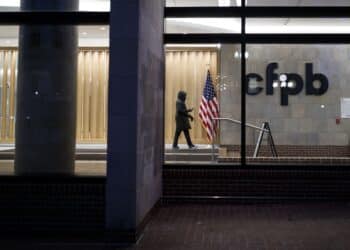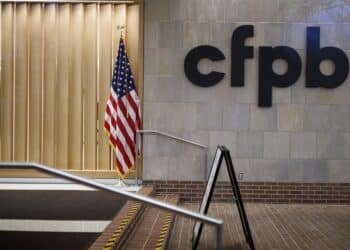The CFPB’s Regulation of the Auto Finance Industry is Legally and Ethically Wrong [OPINION]

In the course of my discussions with clients, colleagues, industry representatives, my study of the agency’s March 2013 guidance and rules, and review of articles relative to the CFPB’s initiative, I’ve reached the conclusion that the agency’s regulation of and involvement with the auto finance industry as to its business with dealers is simply wrong — legally and ethically — and, most importantly, because it is directly counterproductive to its goal of protecting American consumers.
The U.S. Congress, in its occasional wisdom and, undisputedly — in no small part, as the result of an effective lobby on behalf of the nation’s automobile dealers — specifically carved dealers out of the CFPB’s scope of oversight, an action which apparently did not sit well with the CFPB.
As such, the agency, in a thinly veiled end-around move, attempts to direct, supervise & control the automobile dealers in the U.S. by regulating auto finance entities, banks, and non-bank entities that offer financing to dealers. In effect, since it does not have the statutory authority to do so itself, the CFPB is forcing auto lenders to police their dealers, requiring the lenders to oversee how the dealers mark up loans and whether they discriminate against certain borrowers.
It seems to me that it would have been much more evenhanded, fairer, and potentially better-received by the auto finance industry for the agency to have simply engaged in rulemaking for auto dealers by going through proper channels. Instead, the CFPB regulation of the auto finance industry is an unfair, improper, and potentially illegal attempt to control what lenders and dealers charge for their services.
The legal authority of the CFPB, as a whole, is now in question due to the groundbreaking decision of the the U.S. Court of Appeals for the D.C. Circuit in the PHH Mortgage case. Further, its rulemaking directly or indirectly impacting the nation’s auto dealers is dubious, given the agency’s lack of authority over them. Further, the agency admits that it has not even found actual discrimination but has, instead, implied that discrimination occurred because some minorities reportedly received worse lending terms than other non-minorities.
In its March 2013 guidance, the CFPB announced its use of a disparate impact methodology, which allows to penalties against lenders by the CFPB — regardless of the lender’s intent — if they have a neutral policy that creates adverse impact against protected borrowers. This methodology is flawed and legally improper. The agency itself has acknowledged that disparate impact could overestimate potential discrimination but prefers this method to the alternative where bias might be underestimated.
This parental-esque concern, however, fails to take into account the added reputational harm to lenders that results from the CFPB’s basing damages on its own undoubtedly overestimated figures. The agency’s determination of whether borrowers are minorities by looking only at surnames, geographic location, or a combination of both is misguided, in addition to being somewhat offensive.
Moreover, it blatantly ignores business factors recognized by the Justice Department in other contexts as legitimate, including but not limited to credit scores; characteristics of vehicles; timing, location, and structure of deal; and whether car is new or used. Use by the agency of these valid factors would undoubtedly show that fewer consumers are being harmed than alleged by the CFPB.
Furthermore, the CFPB’s white paper — released in 2014 and offering some details on its disparate impact methodology — is overly broad and not sufficiently detailed in indicating specifically how lenders should structure their compliance management systems to avoid being cited for discrimination. This failure by the agency is resulting in a widespread, costly duplication of efforts since every lender has been compelled to come up with its own methods to prevent and remedy potential disparities. Without providing a clear methodology, banks cannot fashion and construct compliance management systems to achieve goals the CFPB has established.
The agency’s targeting of the auto finance industry is reportedly in response to “allegations” that dealers pump up interest rates for customers, make excessive numbers of high risk subprime loans, engage in questionable debt collection practices, and discriminate in lending by adding different markups to these loans. It is simply not realistic for the CFPB to believe that regulation of the lenders who serve dealers will change the entire market pricing theory for automobile dealers.
Most of the industry already utilizes a practice of a 2.5% cap on dealer price discretion, adopted as a result of settlements in the mid-2000s. Regardless, the CFPB’s acute focus on dealer revenue, specifically “markups,” will not end discriminatory practices or discrimination and will likely raise overall financing costs for consumers.
If the practice of dealer markup were eliminated — as the agency suggests — it is not even clear how the market would respond. Dealers would undoubtedly try to replace the revenue stream generated by markups, and the inescapable conclusion is that the consumers will continue to be the source of any new revenue stream.
In addition to the issue of markups, there is the increased cost of the aforementioned compliance programs outlined in the agency’s March 2013 guidance targeting dealer discretion. The CFPB estimates that the labor costs of a compliance exam would be approximately $28,000. Industry trade groups, however, estimated the cost in the range of $75,000 – 100,000. Someone is going to bear the brunt of these increased costs to dealers and lenders, and I have no doubt that the unlucky recipient will be consumers.
Further, the guidance recommending that auto finance entities adopt a flat-fee compensation model for its dealers would not only hurt competition but would undoubtedly boost car prices. By thus denying consumers the right to negotiate a better deal for themselves when they choose a new vehicle, the CFPB will bring only economic harm to the very people the agency was designed to protect: consumers.
Despite the CFPB’s actions, rulemaking, and authority, consumers maintain the option of going directly to lenders or negotiating lowers rates at the dealership. Frankly, the agency’s actions as to the auto finance industry to date assumes ignorance and a lack of sophistication on the part of consumers that is, in my opinion, presumptuous and even offensive. If the goal of the CFPB is indeed protection of our nation’s consumers, it has failed miserably. Pundits describe the CFPB’s continued operations as “precarious” under President-Elect Trump’s new administration. Perhaps a new, less activist director might save the Bureau and put it back on the right track, refocusing its energies on promoting fairness and transparency for consumer financial products and services.
Blair B. Evans, chair of Baker Donelson’s Auto Finance Team, is a creditors’ rights, collections and business litigator with experience representing major automotive and commercial equipment creditors, banks, credit unions, and nonbank auto finance companies in replevin, government seizure and collection actions in state and federal courts. She can be reached at bevans@bakerdonelson.com.














